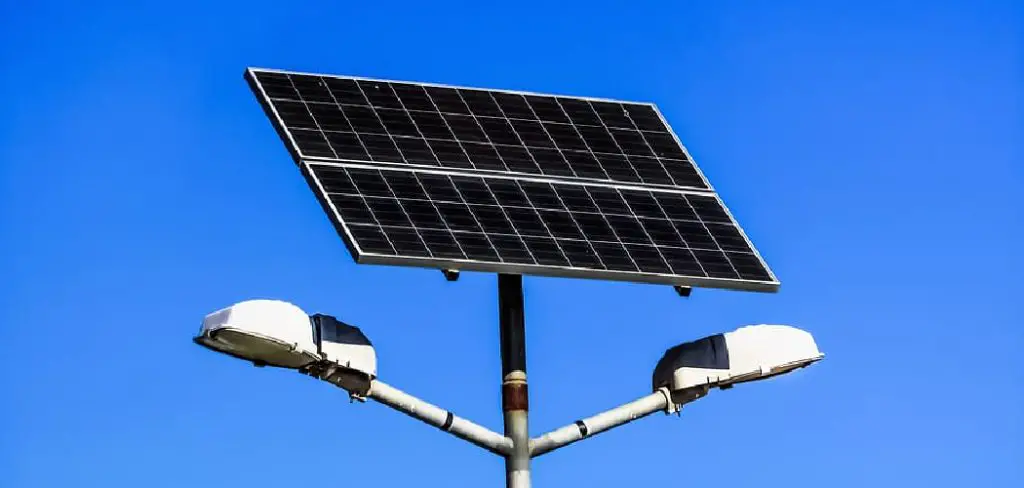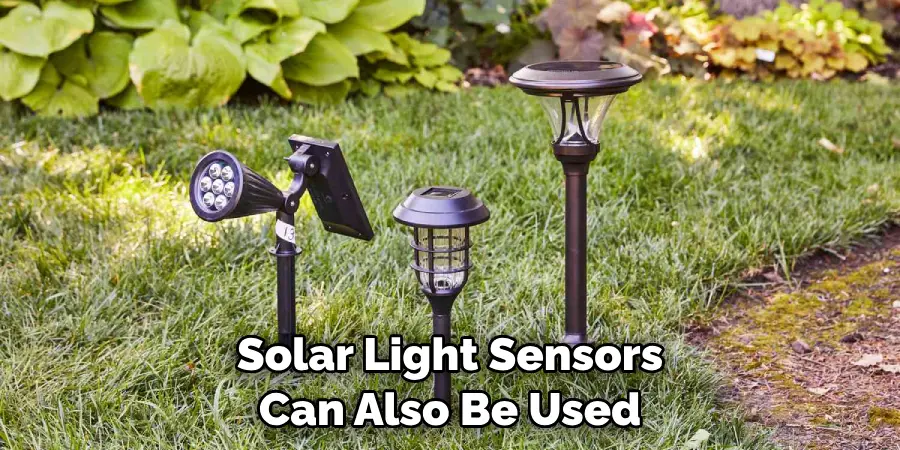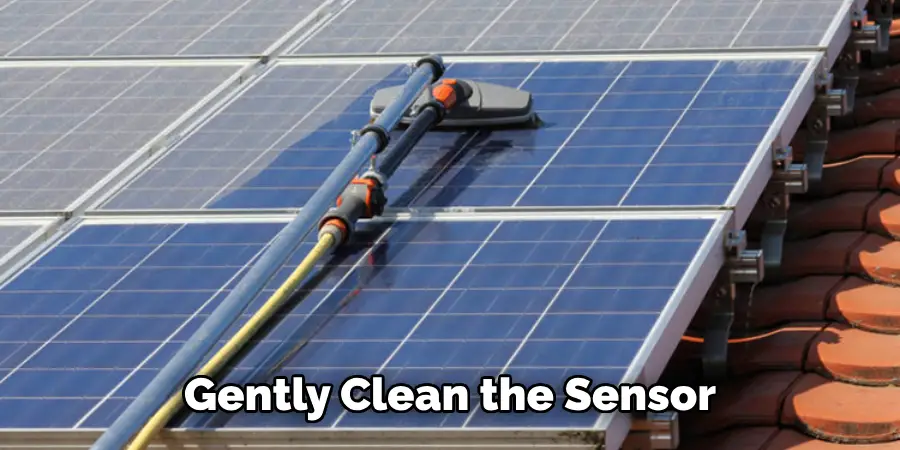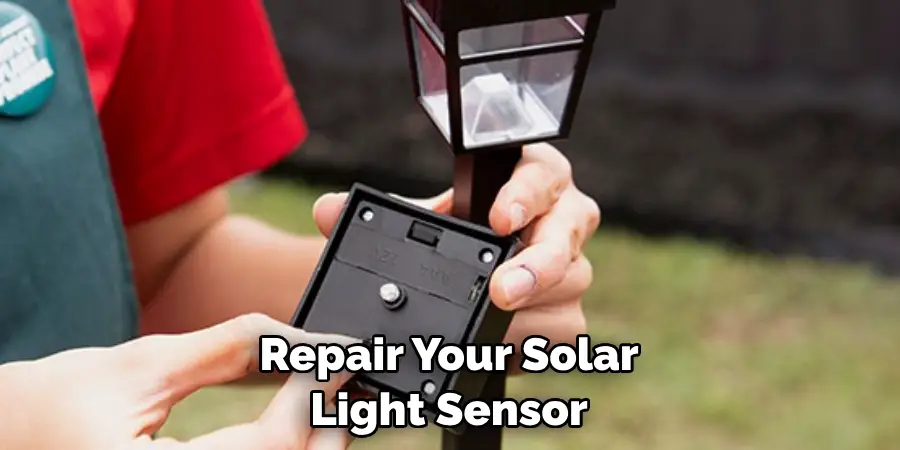Solar light sensors have revolutionized outdoor lighting, providing an energy-efficient and environmentally friendly alternative to traditional electrical fixtures. These sensors enable solar lights to automatically turn on at dusk and off at dawn, maximizing their efficiency and convenience.

However, like any electronic component, solar light sensors can experience issues over time, causing them to malfunction or stop working altogether. If you’re faced with a solar light sensor problem, fear not! This article aims to guide you through the process of how to fix solar light sensor, helping you restore its functionality and extend the lifespan of your solar lighting system.
From troubleshooting common sensor issues to offering practical solutions, we will equip you with the knowledge and techniques to diagnose and repair your solar light sensor, so you can continue enjoying the benefits of efficient and sustainable outdoor lighting.
Understanding the Significance of Solar Light Sensors
Solar light sensors are a type of device that detects the presence of sunlight and triggers an electrical signal. These sensors are typically used in outdoor lighting systems to turn lights on at dusk and off at dawn or when there is not enough light for them to operate efficiently.
This feature helps save energy by making sure lights are only illuminated when needed. They also provide safety measures, as lights will be turned on during hours of darkness when visibility is lower and increases the likelihood of accidents.
Solar light sensors can also be used for automated window treatments, weather stations, and other outdoor applications where it is important to know how much solar radiation is present. With this knowledge, users can adjust their devices accordingly or even shut them down completely if need be.

Explaining the Functionality of Solar Light Sensors
Solar light sensors are an important component of many outdoor lighting systems. They detect the amount of sunlight and automatically turn lights on or off depending on the intensity of the light. This helps conserve energy by reducing unnecessary lighting when there is sufficient natural light.
The solar light sensor works by measuring the amount of sunlight that hits it through a photovoltaic cell. This photovoltaic cell then converts the sun’s energy into an electrical current which powers a switch that turns on or off depending on how much electricity is generated. The more intense the sunlight, the more electricity will be created, and thus, the lights will turn on automatically.
Solar light sensors can be adjusted to respond to different levels of light if needed. This allows you to set your outdoor lighting system to come on at dusk and turn off at dawn, or whatever other settings work for you.
The Role of Sensors in Automatic Lighting Systems
Sensors play an integral role in automatic lighting systems. Solar light sensors, in particular, detect the amount of sunlight that is present and adjust the brightness of outdoor lights accordingly. This system helps to ensure that outdoor spaces are illuminated when needed while also conserving energy and reducing costs.

When a solar light sensor malfunctions, it can cause problems with the way lights turn on and off. To prevent this from happening, there are several steps homeowners should take to fix their solar light sensors and maintain a functional lighting system:
1. Check if the Light Sensor Is Receiving Power
The first step to fixing a malfunctioning solar light sensor is to make sure that it is receiving power correctly. If there is no power being supplied to the sensor, it won’t be able to detect changes in sunlight and control the lights accordingly.
2. Clean or Replace the Sensor
If the sensor is still receiving power but isn’t working properly, homeowners should check for dirt or debris that might be interfering with its performance. If there is debris present, they can clean off the sensor using a damp cloth. If that doesn’t work, then they may need to replace their solar light sensor altogether.
3. Adjust the Sensitivity
For some models of solar light sensors, homeowners can adjust the sensitivity of their system by turning a dial or adjusting settings on an app. This will allow them to customize how sensitive their system is to changes in sunlight.
10 Methods How to Fix Solar Light Sensor
Method 1: Clean the Sensor
Over time, dust, dirt, and debris can accumulate on the sensor, obstructing its ability to detect light accurately. Gently clean the sensor using a soft cloth or a cotton swab dipped in rubbing alcohol. Ensure that the sensor is dry before proceeding.

Method 2: Check the Battery
A depleted or faulty battery can cause the solar light sensor to malfunction. Test the battery using a multimeter and replace it if necessary. Ensure that the new battery is compatible with your solar light model.
Method 3: Inspect the Solar Panel
A dirty or damaged solar panel can impede the charging process and affect the sensor’s functionality. Clean the panel using a damp cloth and check for any cracks or loose connections. Repair or replace the panel as needed.
Method 4: Adjust Sensor Settings
Some solar lights come with adjustable settings for sensitivity and duration. Consult the user manual to understand how to modify these settings. Adjust the sensor’s sensitivity to ensure it accurately detects changes in light.
Method 5: Examine the Light Source
If the solar light sensor is not working at all, check the bulb or LED. Replace any faulty or burned-out lights. Ensure that the light source is compatible with your solar light system.
Method 6: Check Wiring Connections
Loose or disconnected wiring can disrupt the sensor’s operation. Carefully examine the wiring connections and ensure they are secure. Repair or reconnect any loose or damaged wires.
Method 7: Test the Sensor with an Alternative Light Source
If the solar light sensor fails to respond to sunlight, test it with an alternative light source, such as a flashlight. Shine the light directly onto the sensor and observe its reaction. If it doesn’t respond, the sensor may need replacement.
Method 8: Verify Sensor Placement
Improper sensor placement can lead to incorrect readings. Ensure that the sensor is positioned correctly, facing the direction of maximum sunlight. Clear any obstructions that may be blocking the sensor’s view.
Method 9: Update Firmware or Software
In some cases, solar light systems may have firmware or software that controls the sensor’s functionality. Check the manufacturer’s website for any available updates and follow the instructions to update the system.
Method 10: Seek Professional Help
If you have exhausted all troubleshooting methods and the solar light sensor still doesn’t work, it may be time to seek professional assistance. Contact the manufacturer or a qualified technician who specializes in solar lighting systems.
Some Common Mistakes When Fixing Solar Light Sensor
When trying to fix a solar light sensor, it is important to be aware of some common mistakes that can occur. Many people think that all problems with their solar light sensors can be fixed in the same way, which is not true. Here are some common mistakes to avoid when fixing your solar light sensors:
1. Not Understanding the Problem
Before attempting to repair your solar light sensor, make sure you understand what exactly is causing the problem. If you don’t know what’s wrong, then you could end up making a mistake and potentially damaging the device further.

2. Using Incompatible Parts
Using incompatible parts for replacement or repair can cause more damage than good and can even result in permanent damage. Make sure that any parts you use are compatible with the solar light sensor, otherwise you may end up with a broken device.
3. Not Testing the Sensor After Repair
Even if you have fixed the problem, it is important to test the solar light sensor after completing repairs to make sure everything is working as intended. If there are still problems or something wasn’t done correctly, then further repairs might be needed and future damage could be avoided by testing immediately after repair.
4. Not Cleaning Surroundings of the Sensor
Any dust or dirt around your solar light sensor can prevent it from functioning properly, so it is essential to keep its surroundings clean. Also, check for any signs of moisture and water damage since these can have a negative impact on the performance of your solar light sensors.
Conclusion
To conclude, solar light sensors are an important part of maintaining outdoor lighting systems. They offer many benefits, such as energy savings and automatic evening lighting. However, they can experience various types of issues that require regular maintenance and troubleshooting.
Common problems include faulty wiring, incorrect sensor settings, physical damage, battery depletion, or even dirt accumulation on the lens.
With patience and the right techniques in mind, anyone should have no problems properly assessing and repairing their outdoor lights for years to come! Have you recently had to fix your own solar light sensor? If so don’t forget to share what worked best for you in the comments below! Thank you for joining us in today’s blog post about how to fix solar light sensors – we hope it was helpful!
